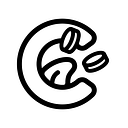While many of us are familiar with NFTs and how these unique tokens can be used to represent a myriad variety of digital assets, especially art, most are not familiar with generative NFTs. These special NFTs are pieces of art themselves, but with a small twist. A digital artist can create the basis of the content and then create variations using not his or her own ability, but computer coding.
Generative art has gathered a lot of interest lately, letting anyone create a whole range of collection of art that is different from its brethren, the variations such as color, palette and even small changes within the art done from computer programs that generate these randomly.
Computer Generated
Generative NFTs are as old as the unique tokens themselves. CryptoKitties, the first successful use case of the tokens itself is a generative NFT system, where the base code of the design for the feline characters are stored in the smart contract and the different images are generated and stored offline.
The algorithms used for the generation can also come in handy. Unlike traditional NFTs where you have to create an art piece or content, and then link it with a token, generative NFTs require you to build the foundation only. The algorithms can be programmed to generate as many NFTs as you want. Parameters such as the quantity, variation and rarity can be added.
A few examples of how generative NFTs have grown big include Bored Ape Yacht Club, a series of images that have an ape as the base and variations that include the shirts they wear and other accessories such as hats, sunglasses and other items. Only last month, one of the rarest NFT of the Bored Ape collection (number 7090) was sold for a whopping $2.25 million in a Sotheby’s auction.
Another famous example is Weird Whales, a collection of cartoonish and pixelated whales. You will be surprised to know that the artist behind the project is a 12-year-old boy. Benyamin created four sets of whales, each defining a “race” (normal, zombie, alien and ape). He then used a customized Python script to generate 3,350 collectable NFTs. Today his OpenSea profile lists more than 1,700 ETH worth of whales traded.
Curated
Generative NFTs are now turning towards another variation, this time powered by the community. Unlike OpenSea and other NFT platforms that anyone can sign up to, mint their NFTs and sell them, community-based platforms allow the sales of only the top selected artworks. Examples include the Art Blocks platform where curated content is selected by its own team, and the art is released slowly. The Fidenza release has been very successful on Art Blocks, with one rare piece being offered for an astounding 100 ETH.
Larva Labs’ Autoglyphs is an experiment in generative art, this time being completely composed by an algorithm with anyone who is willing to spend money to donate and own a piece. After 512 artworks are generated, the algorithm will shut down, making the pieces even rarer.
Foundation is another curated marketplace that increases the value of NFTs by not making it rarer or difficult to buy, but only letting selected artists display their work. Foundation is an invite-only platform for artists and it carefully selects who can come, making it a premium marketplace.
The Market Exists
The NFT examples such as Autoglyphs may seem strange for an ordinary person. Look at the image above. Will you be willing to spend around $600 on the image? It’s no Mona Lisa after all. However, generative art has gathered its own following and people who enjoy this form of content are willing to spend large sums of money to acquire the right to own these.
After all, there is a reason that the crypto investment firm Three Arrows Capital bought NFT Ringer launched on Art Blocks, for an astounding 1,800 ETH.
Generative NFTs with Reward Multipliers
Other companies are bringing ingenuity to Generative NFTs, namely Burp Token pioneering an NFT Raffle where the prize rewards are generative or partner NFTs for the metaverse. However, these NFTs aren’t just basic NFTs, they have functional utility as they contain “reward multipliers”. The NFTs can be dual-staked with $BURP in order to apply the multiplier and multiply the staking rewards. Longer staking periods with higher rarity NFTs will contain higher multipliers.
The highly anticipated Sandbox x CoinBurp co-branded NFTs were recently launched on the Sandbox platform and will be offered as prizes in the monthly NFT Raffle on BurpToken.com. Next up, the first series of the MealDrops generative NFTs are soon to be launched so stay tuned for the upcoming announcements for the full reveal!
Don’t forget — The first monthly NFT Raffle is live on BurpToken.com! Users who have accumulated Raffle Tickets from staking are able to enter with tickets into the raffle to be in with the chance to win some exclusive MealDrops or Sandbox NFTs. Be sure to check out the launch video and article for more information!
Stay up to date with everything by following the channels and joining the social communities!
About CoinBurp
CoinBurp is the cryptocurrency platform partner for the $BURP ecosystem that includes Cede Fields Ltd for token issuance and CB Defined Ltd for DeFi products. The tokens are not issued or controlled by CoinBurp.
About $BURP
$BURP is the official token of the $BURP ecosystem of products including but not limited to non-custodial token management, staking mechanisms, NFT raffles.
Important Information
Cryptocurrencies and crypto tokens are generally not regulated and investors do not have access to recourse or compensation schemes such as, for example, in the UK, the Financial Ombudsman Service or the Financial Services Compensation Scheme. Investing in cryptocurrencies and purchasing crypto tokens can be high risk and investors should carefully evaluate their appetite for risk and their understanding of trading cryptocurrencies prior to entering into a transaction.
